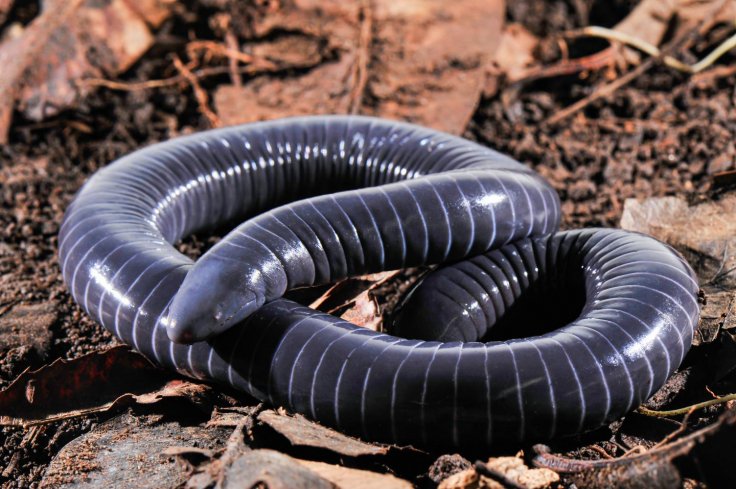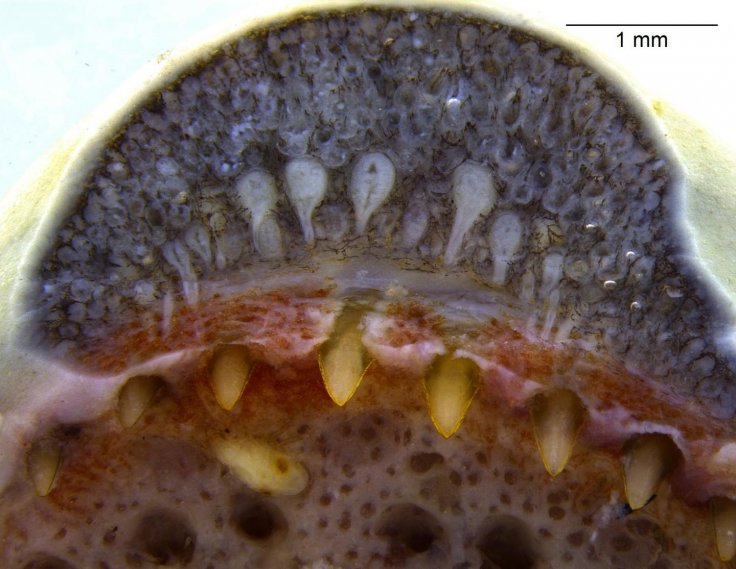Caecilians are a group of limbless, serpentine amphibians which get their name from the Latin word "caecus," which means blind. These limbless amphibians can be easily mistaken for snakes, which appeared during the Cretaceous period around 100 million years ago. But as per scientists caecilians are far older, being roughly 250 million years old.
Recently researchers in a study described specialized glands found along with the teeth of the Siphonops annulatus, also known as ringed caecilian, which have the same biological origin and possibly similar function to the venom glands of snakes. If further research confirms the existence of the venom in their glands, caecilians may represent the oldest land-dwelling vertebrate animal with oral venom glands.
The Blind Creature
Scientists have described caecilians as almost blind creatures, which use a combination of facial tentacles and slime to navigate their underground tunnels. The senior author Carlos Jared, a biologist and Director of the Structural Biology Lab at the Butantan Institute in São Paulo said that these creatures produce two types of secretions -- one is found mostly in the tail that is poisonous, while their head produces mucus to help with crawling through the earth. Since caecilians are one of the least-studied vertebrates, "their biology is a black box full of surprises," said Jared.

In addition, first author of the new study, which was published in the journal iScience, Pedro Luiz Mailho-Fontana, a post-doctoral student in the Structural Biology Lab at the Butantan Institute said, "It is while examining the mucous glands of the ringed caecilian that I stumbled upon a never before described set of glands closer to the teeth."
As per Mailho-Fontana's finding, there were a series of small fluid-filled glands in the upper and lower jaw of ringed caecilian, with long ducts that opened at the base of each tooth. He used embryonic analysis and found that these oral glands originated from a different tissue than the slime. He then found the poison glands in the caecilian's skin.

Mailho-Fontana said that the poisonous skin glands of the ringed caecilian form from the epidermis. During the analysis he also noticed these oral glands develop from the dental tissue, and "this is the same developmental origin we find in the venom glands of reptiles." This new observation marks the first-time glands of this kind have been found in an amphibian.
Usage of Venom Glands
As per the researchers, it is possible that the ringed caecilian may use the secretions from these snake-like venom glands to incapacitate its prey. The co-author Marta Maria Antoniazzi, an evolutionary biologist at the Butantan Institute said as these creatures have no arms and legs, the mouth is their only tool to hunt. The researcher said, "We believe they activate their oral glands the moment they bite down, and specialized biomolecules are incorporated into their secretions."

A primary analysis of the oral glands revealed the presence of high activity of phospholipase A2, which is a common protein found in the toxins of venomous animals. Mailho-Fontana said this protein is uncommon in non-venomous species, but researchers found it in the venom of bees, wasps, and several reptiles. The recent study also revealed that the biological activity of this protein found in the ringed caecilian was higher than what is found in some rattlesnakes.
Jared explained that unlike snakes that have few glands with a large bank of venom, the Siphonops annulatus has many small glands with minor amounts of fluid. Perhaps caecilians represent a more primitive form of venom gland evolution.









